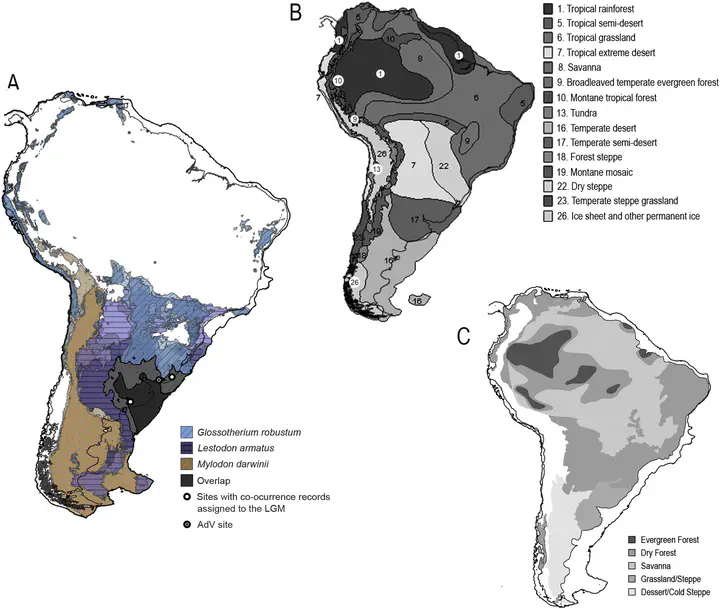Co-occurrence of mylodontid sloths and insights on their potential distributions during the late Pleistocene

Abstract
Species distribution models (SDMs) for the last interglacial (LIG), the global last glacial maximum (LGM) and the Holocene climatic optimum (HCO) were generated for three extinct South American Pleistocene mylodontid giant sloths, Glossotherium robustum, Lestodon armatus and Mylodon darwinii. They are recorded co-occurring in some localities including Arroyo del Vizcaíno site (AdV) in Uruguay. Co-occurrence records were studied based on the overlap of their generated areas of potential distributions, and compared with the available biome reconstructions of South America during the LGM to analyze their distribution patterns, ecological requirements and possible interactions between them. Our results suggest that these sloths could have co-existed mainly in the Chaco-Paraná Basin and the plains in the Río de la Plata area. Areas of high suitability were observed for submerged parts of the continental shelf that were exposed during the LGM showing an overall increase in potential habitat compared to the LIG and HCO. This suggests that there was a drastic reduction in total available areas of preferred habitat at the end of the Pleistocene. The co-occurrence of these sloths at the AdV site suggests the presence of vegetation indicative of mainly open, cold to temperate habitats but with mixed patches typical of humid climates.